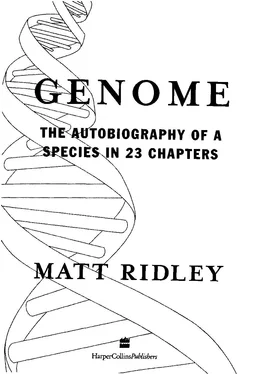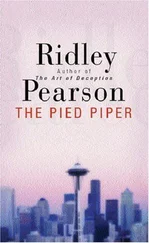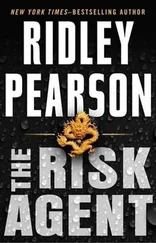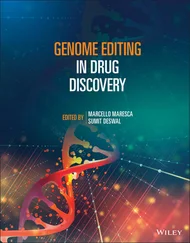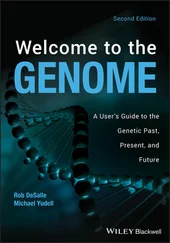Genome - Matt Ridley
Здесь есть возможность читать онлайн «Genome - Matt Ridley» весь текст электронной книги совершенно бесплатно (целиком полную версию без сокращений). В некоторых случаях можно слушать аудио, скачать через торрент в формате fb2 и присутствует краткое содержание. Жанр: Старинная литература, на английском языке. Описание произведения, (предисловие) а так же отзывы посетителей доступны на портале библиотеки ЛибКат.
- Название:Matt Ridley
- Автор:
- Жанр:
- Год:неизвестен
- ISBN:нет данных
- Рейтинг книги:5 / 5. Голосов: 1
-
Избранное:Добавить в избранное
- Отзывы:
-
Ваша оценка:
- 100
- 1
- 2
- 3
- 4
- 5
Matt Ridley: краткое содержание, описание и аннотация
Предлагаем к чтению аннотацию, описание, краткое содержание или предисловие (зависит от того, что написал сам автор книги «Matt Ridley»). Если вы не нашли необходимую информацию о книге — напишите в комментариях, мы постараемся отыскать её.
Matt Ridley — читать онлайн бесплатно полную книгу (весь текст) целиком
Ниже представлен текст книги, разбитый по страницам. Система сохранения места последней прочитанной страницы, позволяет с удобством читать онлайн бесплатно книгу «Matt Ridley», без необходимости каждый раз заново искать на чём Вы остановились. Поставьте закладку, и сможете в любой момент перейти на страницу, на которой закончили чтение.
Интервал:
Закладка:
An important clue lies in the fact that there is no such birth-order effect for lesbians, who are randomly distributed within their families. In addition, the number of elder sisters is also irrelevant in predicting male homosexuality. There is something specific to occupying a womb that has already held other males which increases the probability of homosexuality. The best explanation concerns a set of three active genes on the Y chromosome called the H-Y
minor histocompatibility antigens. A similar gene encodes a protein called anti-Mullerian hormone, a substance vital to the masculinisation of the body: it causes the regression of the Mullerian ducts in the male embryo — these being the precursors of the womb and Fallopian tubes. What the three H-Y genes do is not certain. They are not essential for the masculinisation of the genitals, which is achieved by testosterone and anti-Mullerian hormone alone. The significance of this is now beginning to emerge.
The reason these gene products are called antigens is because they are known to provoke a reaction from the immune system of the mother. As a result, the immune reaction is likely to be stronger in successive male pregnancies (female babies do not produce H-Y
antigens, so do not raise the immune reaction). Ray Blanchard, one of those who studies the birth-order effect, argues that the H-Y
antigens' job is to switch on other genes in certain tissues, in particular in the brain - and indeed there is good evidence that this is true in mice. If so, the effect of a strong immune reaction against these proteins from the mother would be partly to prevent the masculinisation of the brain, but not that of the genitals. That in turn might cause them to be attracted to other males, or at least not attracted to females. In an experiment in which baby mice were immunised 1 2 0 G E N O M E
against H-Y antigens, they grew up to be largely incapable of successful mating, compared with controls, though frustratingly the experimenter did not report the reasons why. Likewise, male fruit flies can be irreversibly induced to show only female sexual behaviour by the switching on at a crucial point in development of a gene called 'transformer'.16
People are not mice or flies, and there is plenty of evidence that the sexual differentiation of the human brain continues after birth.
Homosexual men are clearly not, except in very rare cases, 'mental'
women trapped inside 'physical' men. Their brains must have been at least partly masculinised by hormones. It remains possible, however, that they missed some hormone during some early and crucial sensitive period and that this permanently affects some functions, including sexual orientation.
The man who first set in train the ideas that led to sexual antagonism, Bill Hamilton, understood how profoundly it shook our notions of what genes are: 'There had come the realisation', he wrote later,
'that the genome wasn't the monolithic data bank plus executive team devoted to one project - keeping oneself alive, having babies
- that I had hitherto imagined it to be. Instead, it was beginning to seem more a company boardroom, a theatre for a power struggle of egoists and factions.' Hamilton's new understanding of his genes began to affect his understanding of his mind:17
My own conscious and seemingly indivisible self was turning out far from what I had imagined and I need not be so ashamed of my self-pity! I was an ambassador ordered abroad by some fragile coalition, a bearer of conflicting orders from the uneasy masters of a divided empire . . . As I write these words, even so as to be able to write them, I am pretending to a unity that, deep inside myself, I now know does not exist. I am fundamentally mixed, male with female, parent with offspring, warring segments of chromosomes that interlocked in strife millions of years before the River Severn ever saw the Celts and Saxons of Housman's poem ['A Shropshire Lad'].
C O N F L I C T 1 2 1
The idea of genes in conflict with each other, the notion of the genome as a sort of batleefield between parental genes and childhood genes, or between male genes and female genes, is a little-known story outside a small group of evolutionary biologists. Yet it has profoundly shaken the philosophical foundations of biology.
C H R O M O S O M E 8
S e l f - i n t e r e s t
We are survival machines — robot vehicles blindly programmed to preserve the selfish molecules known as genes. This is a truth that still fills me with astonishment.
Richard Dawkins, The Selfish Gene
Instruction manuals that come with new gadgets are notoriously frustrating. They never seem to have the one piece of information you need, they send you round in circles, they leave you high and dry, and they definitely lose something in the translation from Chinese. But at least they do not insert, just when you are getting to the bit that matters, five copies of Schiller's 'Ode to Joy' or a garbled version of a set of instructions for how to saddle a horse.
Nor do they (generally) include five copies of a complete set of instructions for how to build a machine that would copy out just that set of instructions. Nor do they break the actual instructions you seek into twenty-seven different paragraphs interspersed with long pages of irrelevant junk so that even finding the right instructions is a massive task. Yet that is a description of the human S E L F - I N T E R E S T 1 2 3
retinoblastoma gene and, as far as we know, it is typical of human genes: twenty-seven brief paragraphs of sense interrupted by twenty-six long pages of something else.
Mother Nature concealed a dirty little secret in the genome. Each gene is far more complicated than it needs to be, it is broken up into many different 'paragraphs' (called exons) and in between lie long stretches (called introns) of random nonsense and repetitive bursts of wholly irrelevant sense, some of which contain real genes of a completely different (and sinister) kind.
The reason for this textual confusion is that the genome is a book that wrote itself, continually adding, deleting and amending over four billion years. Documents that write themselves have unusual properties. In particular, they are prone to parasitism. Analogies become far-fetched at this point, but try to imagine a writer of instruction manuals who arrives at his computer each morning to find paragraphs of his text clamouring for his attention. The ones that shout loudest bully him into including another five copies of themselves on the next page he writes. The true instructions still have to be there, or the machine will never be assembled, but the manual is full of greedy, parasitic paragraphs taking advantage of the writer's compliance.
Actually, with the advent of email, the analogy is no longer as far-fetched as it once was. Suppose I sent you an email that read: 'Beware, there is a nasty computer virus about; if you open a message with the word "marmalade" in the title, it will erase your hard disk! Please pass this warning on to everybody you can think of.' I made up the bit about the virus; there are, so far as I know, no emails called 'marmalade'
doing the rounds. But I have very effectively hijacked your morning and caused you to send on my warning. My email was the virus.
So far, each chapter of this book has concentrated on a gene or genes, tacitly assuming that they are the things that matter in the genome. Genes, remember, are stretches of D N A that comprise the recipe for proteins. But ninety-seven per cent of our genome does not consist of true genes at all. It consists of a menagerie 1 2 4 G E N O M E
of strange entities called pseudogenes, retropseudogenes, satellites, minisatellites, microsatellites, transposons and retrotransposons: all collectively known as 'junk D N A ' , or sometimes, probably more accurately, as 'selfish D N A ' . Some of these are genes of a special kind, but most are just chunks of D N A that are never transcribed into the language of protein. Since the story of this stuff follows naturally from the tale of sexual conflict related in the last chapter, this chapter will be devoted to junk D N A .
Читать дальшеИнтервал:
Закладка:
Похожие книги на «Matt Ridley»
Представляем Вашему вниманию похожие книги на «Matt Ridley» списком для выбора. Мы отобрали схожую по названию и смыслу литературу в надежде предоставить читателям больше вариантов отыскать новые, интересные, ещё непрочитанные произведения.
Обсуждение, отзывы о книге «Matt Ridley» и просто собственные мнения читателей. Оставьте ваши комментарии, напишите, что Вы думаете о произведении, его смысле или главных героях. Укажите что конкретно понравилось, а что нет, и почему Вы так считаете.
